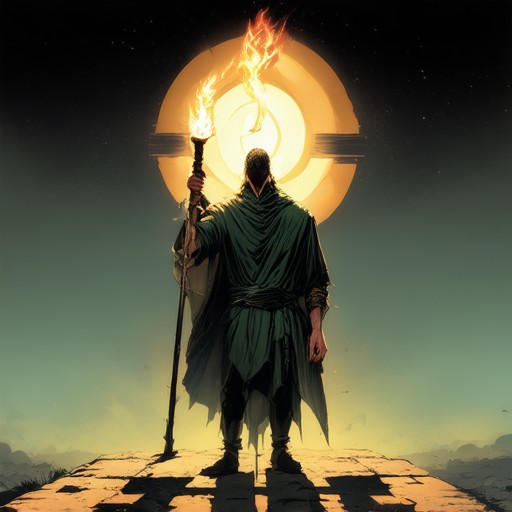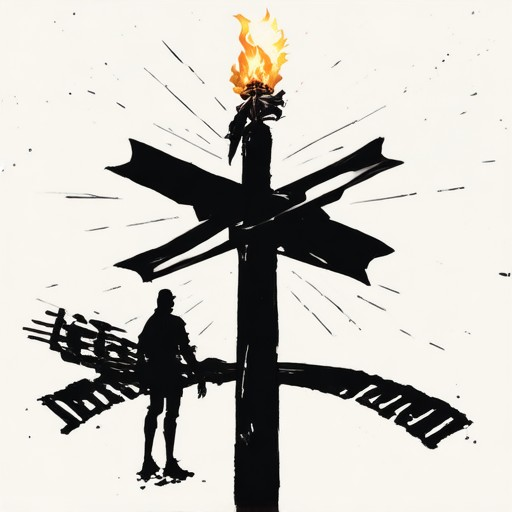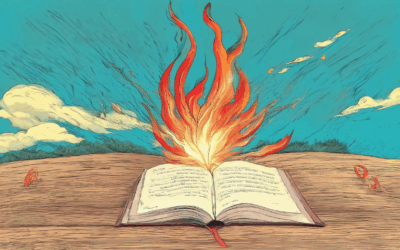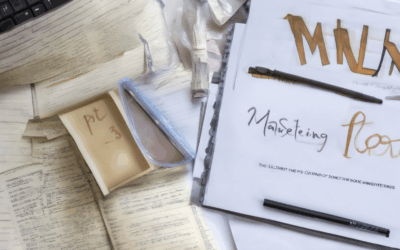Fiction storytelling has long been a cornerstone of entertainment, offering audiences immersive worlds and compelling narratives. At the heart of every great story lies the concept of the **fiction story arc**, a structural framework that guides characters, plotlines, and themes from beginning to end. Whether you’re a seasoned writer or a curious reader, understanding the dynamics of fiction story arcs can deepen your appreciation for literature and even enhance your own creative process.
Key Takeaways
- Master the Hero’s Journey to craft compelling narratives and unlock storytelling potential.
- Develop Character Arcs to deepen your characters’ growth and engagement.
- Apply the 5-Point Story Arc for a structured and dynamic narrative flow.
- Leverage Transformational Arcs to create meaningful character evolution.
- Incorporate Rebellion Arcs to inject tension and drive plot progression.
- Utilize Quest Motifs to guide your protagonists effectively.
- Integrate Rags-to-Riches Themes for relatable and inspiring success stories.
- Explore Man vs. Nature Arcs to add depth through survival struggles.
- Understand Static Characters to provide stability in your narratives.
- Delve into Anti-Hero Descent Arcs for complex and layered storytelling.

The 7 Story Arcs Explained
Story arcs are essential components of narrative structure, guiding readers through the progression of events in a story. Below is a breakdown of the seven primary story arcs:
- 1. Exposition – This sets the stage by introducing characters, setting, and the central conflict. It answers questions like “Who am I?” “Where am I?” and “What’s going on?”. Examples include the opening chapters of To Kill a Mockingbird or the prologues in epic tales.
- 2. Rising Action – This is where the main plot begins to unfold, leading up to the climax. It establishes the main character’s journey and the growing tension. Think of Frodo’s journey in The Lord of the Rings during his quest to destroy the One Ring.
- 3. Climax – The peak moment where the main conflict reaches its highest point of tension. This is often the most dramatic part of the story, such as the final battle in Star Wars: Return of the Jedi .
- 4. Falling Action – After the climax, this phase resolves the main storyline. It wraps up loose ends and shows the aftermath of the events. A classic example is the ending of Pride and Prejudice .
- 5. Resolution – This brings closure to the story, addressing any remaining questions or themes. It leaves the audience with a sense of completion, like the epilogue in Harry Potter and the Deathly Hallows .
- 6. Quiescence – In some narratives, this phase occurs after the main plot is resolved. It focuses on the characters’ lives after the main events, showing their growth or continued journeys. An example is the peaceful life of the characters in The Hobbit after their adventures.
- 7. Endings – This can vary widely. It could be a happy ending, a bittersweet conclusion, or an open ending that leaves room for interpretation. Examples include the hopeful ending of Les Misérables or the ambiguous finish of The Great Gatsby .
Understanding these arcs helps writers and readers alike create and appreciate compelling stories. Each phase serves a purpose in guiding the narrative and satisfying the audience.
Understanding Story Arcs
A story arc is a structural device used in narratives to organize events and characters. The classic story arc typically consists of five components, which help guide the progression of a plot. Below is a breakdown of these components:
- Exposition :
- This is the foundation of the story, introducing the setting, characters, and the central conflict or problem.
- Example: In To Kill a Mockingbird , the exposition establishes Mayella’s crush on Atticus Finch and the societal tensions in their town.
- Rising Action :
- This phase builds suspense and develops the story’s major themes. It sets up the stakes and challenges the protagonist faces.
- Example: In Harry Potter and the Sorcerer’s Stone , the rising action includes Harry discovering his magical heritage and receiving the Sorting Hat.
- Climax :
- The climax is the peak of the story, where the main conflict reaches its most intense point. It often involves a decisive moment that impacts the rest of the narrative.
- Example: In The Great Gatsby , the climax occurs during the confrontation between Jay Gatsby and Tom Buchanan at the Daisy Buchanan house.
- Falling Action :
- After the climax, the story moves toward resolution, showing the consequences of the events. This phase wraps up loose ends and provides closure.
- Example: In Pride and Prejudice , the falling action shows Mr. Darcy proposing to Elizabeth and the couple planning their wedding.
- Resolution :
- The resolution ties up the story, answering unanswered questions and leaving the audience with a satisfying conclusion.
- Example: In The Lord of the Rings: Return of the King , Aragorn becomes king, and Frodo departs with the One Ring to Mordor.
By understanding these elements, writers can craft compelling stories that engage readers and maintain their interest throughout the narrative.
For more insights into storytelling techniques and narrative development, visit James Whitfield Thomson ‘s literary platform.

What is an Arc in Fiction?
An arc in fiction refers to the overarching storyline or plot structure that spans multiple episodes, chapters, or installments within a larger narrative. It is often used in episodic storytelling across various mediums such as television series, graphic novels, video games, and serialized web series. The term “arc” itself originates from the concept of a narrative arc, which describes the progression of a story through distinct phases.
Components of a Story Arc:
- Setup : Introduces the protagonist, setting, and central conflict.
- Confrontation : Develops tension and challenges faced by the character(s).
- Climax : Reaches a peak point of conflict or emotional intensity.
- Resolution : Concludes the immediate storyline, though it may set up future arcs.
Examples Across Media:
- Books : J.K. Rowling’s Harry Potter series features a grand arc that spans seven books, culminating in the battle against Voldemort.
- Television Shows : Stranger Things uses an arc that explores the supernatural phenomena in the town of Hawkins.
- Movies : Each installment in the Star Wars saga contributes to the larger arc of the galaxy far, far away.
Tips for Authors:
Constructing a compelling arc requires careful planning and consistency. Consider these guidelines:- Pacing : Balance short-term goals with long-term objectives.- Character Development : Deepen characters through their journey across the arc.- Conflict : Maintain engagement by evolving challenges and stakes.
For more insights on crafting effective story arcs, explore our resources on narrative development and storytelling techniques at James Whitfield Thomson .

What are the main story arcs?
Story arcs are the primary narrative structures that drive a story forward, often consisting of a sequence of events leading to a climax and resolution. Here are the six main story arcs identified by various storytelling frameworks:
- The Hero’s Journey
A classic narrative structure popularized by Joseph Campbell, this arc follows a hero who faces challenges, undergoes transformations, and ultimately achieves his or her goal. Examples include myths, epics, and coming-of-age stories. - Rags to Riches
This arc focuses on the journey of a character rising from humble beginnings to great success. Stories like Cinderella or rags-to-riches biographies fit this pattern. - Man vs. Nature
This arc explores the struggle between humanity and nature, often involving survival against environmental challenges. Movies like The Revenant or books like Moby-Dick illustrate this theme. - Quest
The quest arc involves a character embarking on a journey to find something valuable, often a magical object or a person. Examples include The Lord of the Rings or Harry Potter . - Rebellion
This arc centers around a character or group rising up against an oppressive force or authority. Stories like Star Wars: A New Hope or Les Misérables fit this category. - Transformation
In this arc, the protagonist undergoes a significant internal change or growth, often through a series of trials or relationships. To Kill a Mockingbird and The Catcher in the Rye are examples.
Each of these arcs can stand alone or be combined to create a more complex narrative. Understanding these structures can help writers craft compelling stories that resonate with audiences. For more insights into storytelling techniques, visit jameswhitfieldthomson.com .
The Four Arcs Explained
A character arc refers to the journey a character undergoes throughout a story, showcasing growth, development, or transformation. Below are the four primary types of character arcs, each illustrating distinct ways characters evolve:
- The Hero’s Journey
- This arc follows the classic narrative structure popularized by Joseph Campbell, where the hero embarks on a quest, faces challenges, and ultimately achieves self-discovery or triumph.
- Example: In The Lord of the Rings , Frodo’s journey from an ordinary hobbit to a brave warrior showcases this arc.
-
The Anti-Hero’s Descent
- Unlike the hero, the anti-hero often starts as flawed or morally ambiguous, descending into darkness before finding redemption.
- Example: Walter White’s transformation from a mild-mannered teacher to a drug kingpin in Breaking Bad demonstrates this arc.
-
The Flawed Hero
- The flawed hero begins with imperfections, learning to overcome these flaws throughout the story.
- Example: Katniss Everdeen in The Hunger Games struggles with moral dilemmas and leadership, growing stronger despite her imperfections.
-
The Static Character
- These characters remain unchanged, serving as constants in the story, often providing perspective or wisdom.
- Example: Gandalf in The Lord of the Rings remains a wise mentor, offering guidance without significant personal development.
Each arc offers unique opportunities for character development, enriching the narrative and engaging readers. By understanding these arcs, writers can craft deeper, more relatable characters.

What is a 5 Point Story Arc?
A 5-point story arc is a simple yet effective framework for structuring a narrative. It breaks down the story into five distinct phases, helping writers and creators maintain consistency and direction. Here’s a breakdown of each component:
- Introduction : This sets the stage by introducing the protagonist, the setting, and the central conflict or goal. It establishes the audience’s connection to the character and the world they’re entering.
- Journey : The protagonist begins their quest or adventure, encountering challenges and gathering necessary tools or allies along the way. This phase builds momentum and introduces key elements of the story.
- Rising Action : Tension escalates as the protagonist faces increasingly difficult obstacles and reveals deeper aspects of the plot. This phase often includes twists and reveals hidden enemies or complexities.
- Climax : The highest point of conflict occurs, where the protagonist confronts the primary antagonist or resolves the central conflict. This is where the stakes are highest, and the outcome determines the story’s direction.
- Resolution : The story wraps up, resolving the main plotlines and leaving the audience with a sense of closure. This phase may offer lessons, reinforce themes, or set the stage for future stories.
A well-crafted 5-point story arc ensures a balanced and engaging narrative, keeping readers invested throughout the journey.





0 Comments